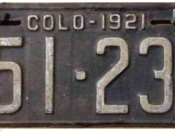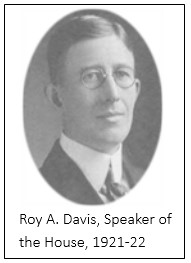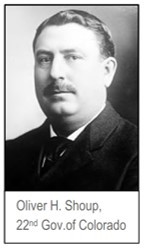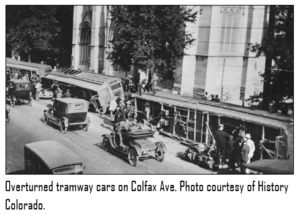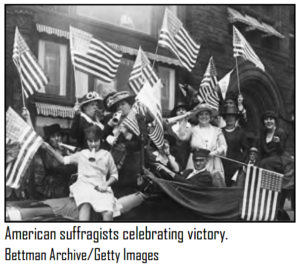by Jessica Wigent
Editor’s note: This article was originally posted December 31, 2015. Because the impact of federalism on our judicial system is still relevant, we decided it would be helpful to post it again.
In a recent webcast presented by the Council of State Governments, Lisa Soronen, executive director of the State and Local Legal Center, and Paul Clement, a former U.S. Solicitor General, discussed federalism, how it guides our complex judicial system, and how courts’ decisions impact state governments. It’s a useful review as we come to the close of 2015 and look ahead to court cases in the coming year.
Federalism, from the Latin root foedus, or “formal agreement or covenant,” is a system of government where authority is allocated between national and state governments— and for our purposes here, state and federal courts.
Alexander Hamilton, “the ten dollar founding father without a father,” as he is described in the celebrated Broadway play named for him, summed up the usefulness of our system, calling it “a double security to the people,” because if our rights “are invaded by either [our state or federal government], [we] can make use of the other as the instrument of redress.”
So how does this intricate balance of power work?
The federal courts:
- Answer constitutional questions (Was a fundamental liberty at stake in the gay marriage debate? The Supreme Court said yes in Obergefell v. Hodges)
- Handle interstate tussles (The Supreme Court is currently deciding whether to hear Oklahoma’s and Nebraska’s lawsuit against Colorado over recreational marijuana)
- Step in when Congress passes a law some say is murky (What did Congress really mean to say about subsidies and federal and state health exchanges in the Affordable Care Act? The Supreme Court answered this question in King v. Burwell)
- Hear cases where the United States is suing or being sued (Remember when then-President Richard Nixon tried to tell the New York Times and the Washington Post they couldn’t publish the then-classified Pentagon Papers? In New York Times Co. v. United States, the Supreme Court said the First Amendment protected the paper’s right to publish the documents detailing the country’s involvement in Vietnam)
And the state courts? Well, they decide (almost all of) the rest—from traffic tickets to whether awarding state-funded tuition scholarships to students who attend sectarian schools violates the Colorado Constitution. (Whether the latter violates the First Amendment of the U.S. Constitution is an issue the federal courts would have to decide.)
The structures of the federal and state courts are fairly similar:
| Level | Colorado State Level Courts | Federal Level |
|---|---|---|
| Lower courts (hold trials, make findings of fact and law) | County and district courts, scattered throughout 22 judicial districts across the state, and specialized courts (like our seven water courts) | U.S. District Court, District of Colorado |
| Intermediate courts (hear appeals from the lower courts) | Colorado Court of Appeals | 10th Circuit Court of Appeals |
| The high court (hears appeals from the intermediate courts, sometimes) | Colorado Supreme Court | U.S. Supreme Court |
So we’ve got the levels down; we know which cases end up in which court. Now, how do cases get decided?
Again, both state and federal courts work similarly. As Soronen explained, the courts use a hierarchy of laws when making their decisions. First, they look to the (federal and/or state) constitution, then to statutes passed by the Congress/legislature, then to rules and regulations created by administrative agencies (like the I.R.S. or the Colorado Department of Education), and, finally, they look to case law and common law.
The law develops through the expansion of case law—as courts answer more and more questions and make rulings on certain issues, they have more and more references to turn to and follow when considering their decisions. This is called applying precedent—or stare decisis, meaning Let it Stand!—and it is (usually) the guiding principle of our judicial system, aiding both we the people and the courts in many ways:
- It’s efficient
- It’s fair
- It gives the system predictability
- It’s a check on arbitrary behavior
So when does precedent apply? Lest you think we forgot the title of this post (we are supposed to be talking about federalism after all) the precedent of a state court applies just to that state’s courts. If the Colorado Supreme Court says it tastes like chicken, so do the Colorado Court of Appeals and the county and district courts. But whatever it tastes like in California or New Jersey or Texas doesn’t affect what it tastes like in Colorado. In the federal system, the same hierarchy applies within the districts and circuits, except that, when the U.S. Supreme Court says it tastes like chicken, every court in our fair land—state and federal— says it does too.
Soronen explained that state courts are not bound by interpretations of federal law made by the federal district courts or federal courts of appeals, even in the same state! And this means? Judges in state courts throughout Colorado aren’t bound by rulings made by a judge from the U.S. District Court, District of Colorado or the Tenth Circuit Court of Appeals. This can get confusing fun (States interpret state and federal law! Federal courts can’t tell state courts what to do!) and is a product of the philosophical compromise of our Founding Fathers that led to our federalist system of government.
We Coloradans would do well to understand how federalism and the courts work, so we can better understand why TABOR has been challenged in both state and federal courts, why our friendly state neighbors to the east and southeast are suing us over marijuana in federal and not state court, and why, at least for now, our school voucher cases have only been heard in state court.
At the Constitutional Convention in 1787, Delaware Delegate John Dickinson famously said: “Let our government be like that of the solar system. Let the general government be like the sun and the states the planets, repelled yet attracted, and the whole moving regularly and harmoniously in several orbits.” What we ended up with is more complicated than what he envisioned, but it’s a system, and it’s ours.

